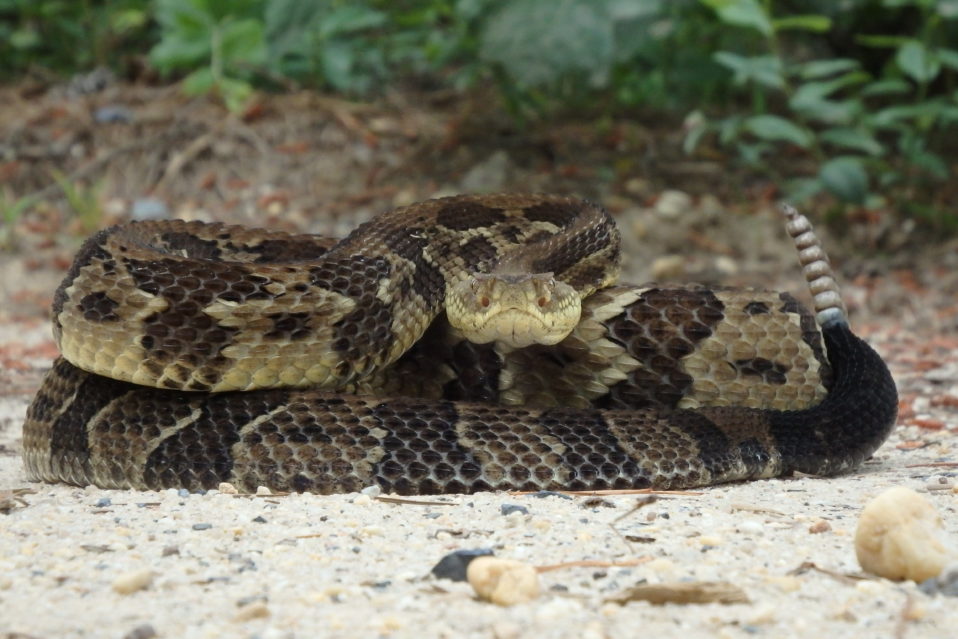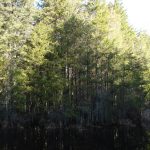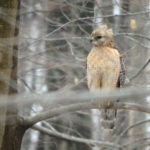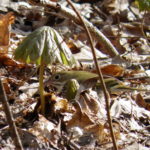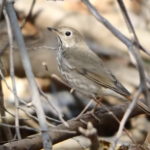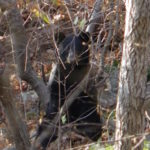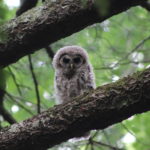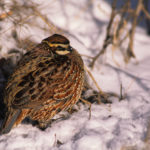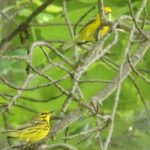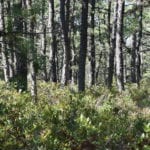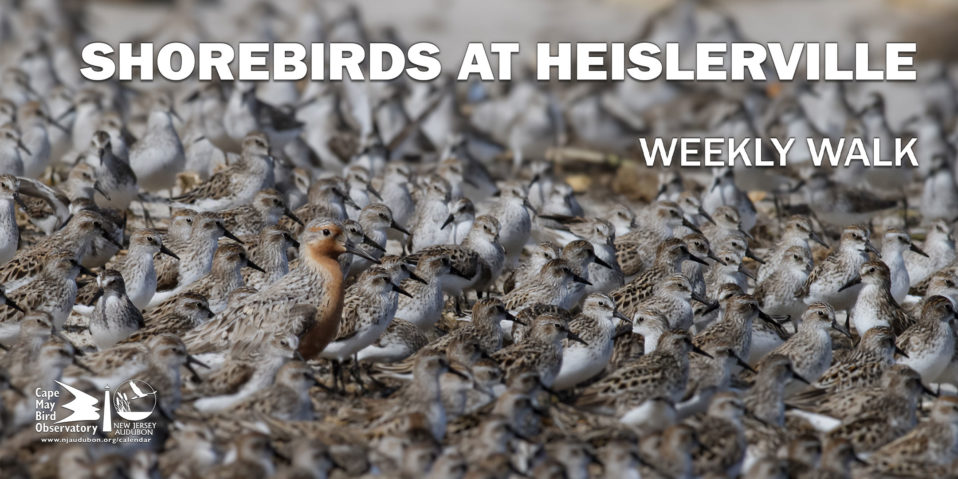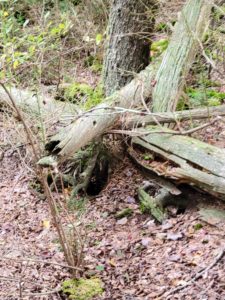
A Timber Rattlesnake den at the base of a Atlantic White Cedar tree In the NJ Pinelands, According to NJ Division of Fish & Wildlife, in southern NJ, State Endangered Timber Rattlesnakes usually den in winter along streams in Atlantic White Cedar swamps. They use crevices among the tree roots to access underground cavities just above the groundwater line as hibernacula. Photo by John Parke
Atlantic white-cedar (Chamaecyparis thyoides) (AWC) wetlands represent a globally rare plant community, and one of ecological, economic, and cultural significance. In the state of New Jersey, this pant community has experienced severe decline, falling from an estimated 115,000 acres pre-European settlement to around 25,000 acres remaining in the state (NJFAP, 2020). Leading drivers of this decline include conversion to agriculture, land development, white-tailed deer population expansion, wildfires, poor management, and natural succession. Despite this overall reduction of AWC, southern New Jersey has some of the largest remaining natural AWC-dominated communities throughout the species’ range. However, climate change impacts such as salt-water intrusion driven by sea-level rise and excessive flooding now threaten these remaining AWC stands. Without proper management of existing AWC and restoration of historic or potential AWC wetlands, declines are likely to continue.
AWC declines have broader impacts on regional biodiversity and ecology. AWC supports several rare and imperiled plant and wildlife species while also filtering surface water, promoting ground water recharge, and mitigating flooding. Interestingly, AWC is a subclimax habitat and is therefore disturbance dependent. Thus, in the absence of science-based management, AWC forests tend to succeed to hardwood stands dominated by Red Maple and Black Gum (for example).
Although Red Maple and Black Gum are native species with ecological value, they are also very common as the 2nd and 3rd most abundant trees in the state, respectively (2019 FIA-NJ, US Forest Service). Therefore, one method to promote AWC restoration and regional biodiversity is to remove competing, common vegetation through mechanical or manual means and allow for natural regeneration of AWC from the suppressed native seedbank. With the competition removed, regenerating cedars have full access to the sunlight to grow. Additionally, restoration can also include augmenting the seed bank by planting AWC seedlings to complement the natural regeneration process via intentional reforestation. When given appropriate growing conditions, AWC can densely regenerate. In areas with successful management and restoration, re-growth can be expected within 3 to 5 years.
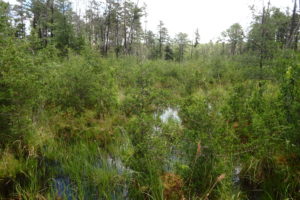
An Atlantic White Cedar restoration after some trees were harvested and competing vegetation such as red maple and black gum were removed. Since a portion of the forest canopy was removed, more sunlight therefore can reach the ground, thus stimulating the native seed bank and allowing for natural regeneration of Atlantic White Cedar and other native Pinelands plants. Now through active management this AWC forest is on a path to having a diverse age-class of trees, which in turn promotes forest resiliency against climate change impacts while also providing critical young forest habitat for many wildlife and plant species unique to the NJ Pine Barrens. Photo by John Parke
In the fall of 2021 New Jersey Audubon Stewardship staff planted over 8,500 Atlantic white-cedar seedlings at two sites (the Lee Brothers Cranberry Farm and Pine Island Cranberry Co.) in the NJ Pinelands. At both sites, hardwood vegetation controls were performed (cutting and herbicide application) under their State approved Forest Stewardship Plans to promote healthy AWC stands. Additionally, NJA donated 2,500 Atlantic white-cedar seedings to a AWC restoration project lead by Stockton University.
These three projects are great examples of collaborative, strategic conservation planning and implementation. In each case, active forest management is being leveraged to maximize ecosystem adaptability. Approaches like this will be increasingly important in the face of ongoing and future climate change.
NJ Audubon supports forest stewardship planning and implementation of active ecological forest management practices. Additionally, New Jersey Audubon is currently providing both technical and financial assistance to private landowners in southern New Jersey interested in AWC restoration. Financial assistance may include, but is not limited to, the development of a Forest Stewardship Plan, brush management, forest stand improvement, fencing, and seedlings. For more information, please contact Danielle Bara at [email protected]
References
New Jersey Forest Action Plan December 2020, Prepared and Published By: New Jersey Department of Environmental Protection Division of Parks and Forestry, NJ Forest Service, In Cooperation with: USDA Forest Service, Eastern Area, State & Private Forestry, Region 9 USDA Forest Service, Forest Inventory and Analysis (FIA)
USDA Forest Service. 2020. Forests of New Jersey, 2019. Resource Update FS-249. Madison, WI: U.S. Department of Agriculture Forest Service, Northern Research Station. 2 p. https://doi.org/10.2737/FS-RU-249




